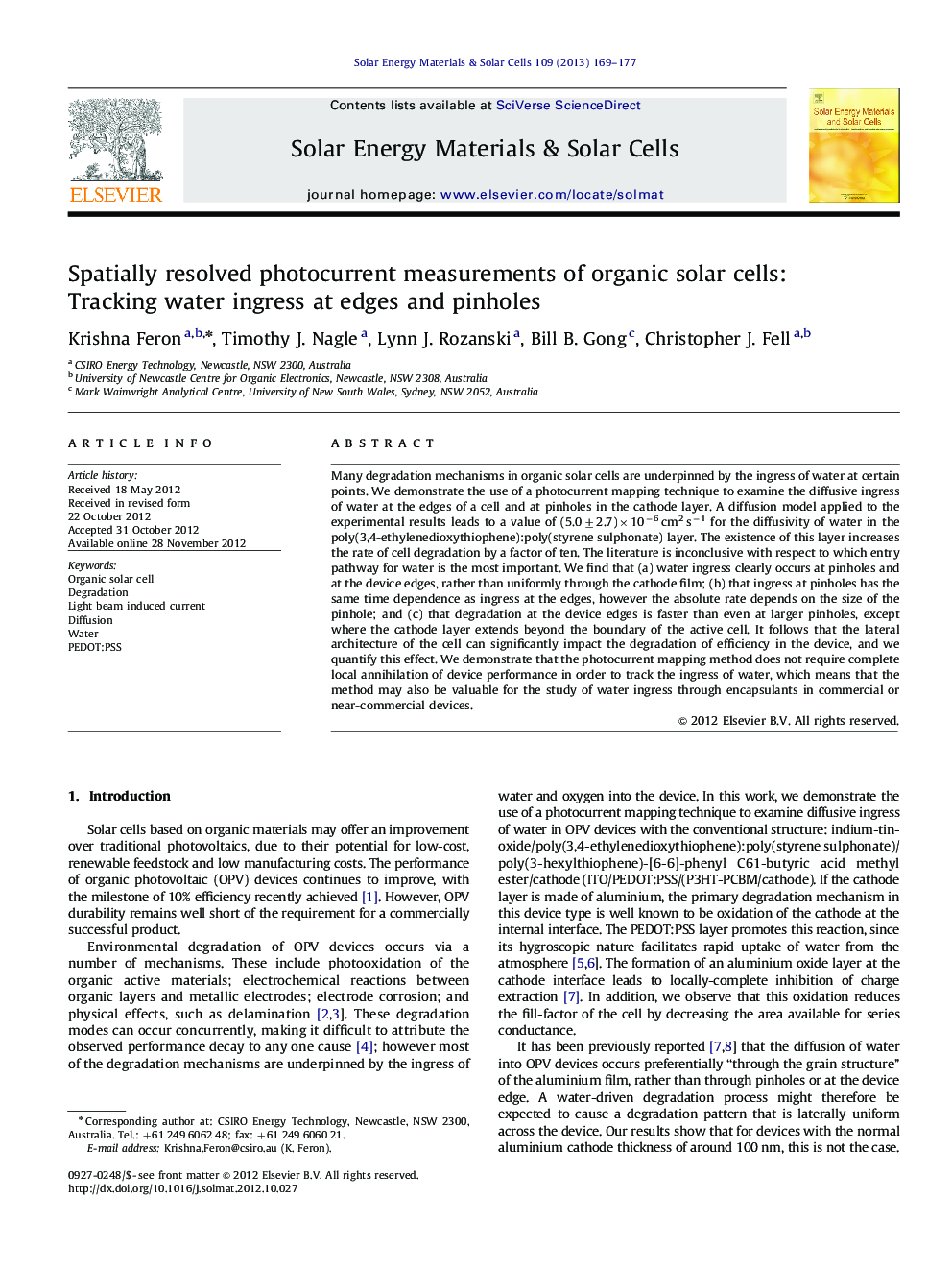| Article ID | Journal | Published Year | Pages | File Type |
|---|---|---|---|---|
| 78429 | Solar Energy Materials and Solar Cells | 2013 | 9 Pages |
Many degradation mechanisms in organic solar cells are underpinned by the ingress of water at certain points. We demonstrate the use of a photocurrent mapping technique to examine the diffusive ingress of water at the edges of a cell and at pinholes in the cathode layer. A diffusion model applied to the experimental results leads to a value of (5.0±2.7)×10−6 cm2 s−1 for the diffusivity of water in the poly(3,4-ethylenedioxythiophene):poly(styrene sulphonate) layer. The existence of this layer increases the rate of cell degradation by a factor of ten. The literature is inconclusive with respect to which entry pathway for water is the most important. We find that (a) water ingress clearly occurs at pinholes and at the device edges, rather than uniformly through the cathode film; (b) that ingress at pinholes has the same time dependence as ingress at the edges, however the absolute rate depends on the size of the pinhole; and (c) that degradation at the device edges is faster than even at larger pinholes, except where the cathode layer extends beyond the boundary of the active cell. It follows that the lateral architecture of the cell can significantly impact the degradation of efficiency in the device, and we quantify this effect. We demonstrate that the photocurrent mapping method does not require complete local annihilation of device performance in order to track the ingress of water, which means that the method may also be valuable for the study of water ingress through encapsulants in commercial or near-commercial devices.
► We use LBIC to examine diffusive ingress of water in organic solar cells. ► We apply a diffusion model to determine the diffusivity of water in the device. ► We examine and quantify water ingress through pinholes and at the edges of the device. ► Ingress of water can be tracked in devices that utilise silver or aluminium. ► The lateral device architecture affects the degradation rate and pattern.
